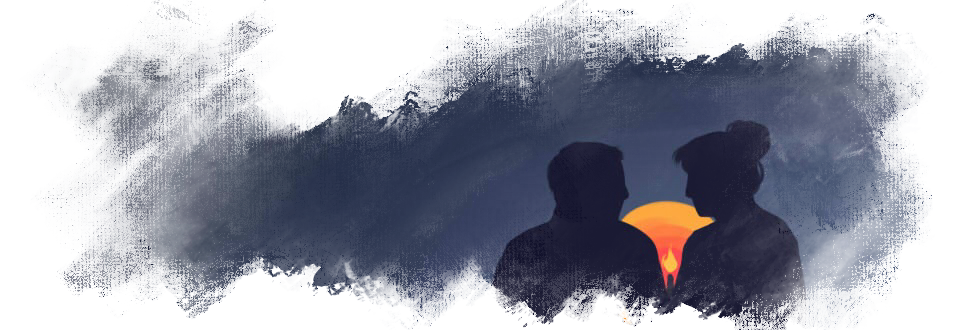Introduction
Hermia is the home of the Arclands world setting. The scholars of Earthly Things at the House of Neem in Harenis believe that there are three known continents in Hermia, which exist mainly in its Southern Hemisphere, surrounded by deep blue oceans.
Hermia orbits a yellow star known as Ziira, (which in Vannic, the main language of Aestis, means the Third Eye of the Keeper).
Hermia has two frozen poles and two tropics, north and south of the equator and its night skies are filled with countless constellations of stars, which the first mariners of Hermian seas used to navigate.
Hermia is a world that is undergoing an immense change, one which began 295 years ago.
At the end of decades of famine, storms, blights and bloodshed across the three continents, a new and unfamiliar energy surged into the world.
At the same time many priests of the dominant faiths of Aestis began to hallucinate that their god, the Keeper, who they believed was the creator of Hermia, had died.
The energy contained within the body of the Keeper, a magic power known only as Fate, began to flood back into the world, as has started to change the very nature of Hermia itself.
Across the world, mortals who were sensitive towards magic or born with it in their blood have gradually begun to be able to wield this powerful new force and discover spellforges, where magical energy accumulates.
Hermia and its moons
Hermia has two moons, known in the Vannic language as Ria and Talan. They can both be seen together in the skies at certain times of the year and seeing the moons aligned is considered in many cultures to be a blessing.
Ria is a small uncratered moon on a four month orbit of Hermia.
It stays full for a month and new for a month and has an elliptical orbit, so appears larger in midyear. Ria is viewed across Aestis, the central continent of Hermia as the moon that dictates the cycles of nature, the harvest and fertility.
Talan is cratered, has a circular three month orbit, and appears larger in the sky than Ria.
In many parts of
Aestis, Talan is seen as the moon that dictates human affairs, rather than the seasons and nature. Wars, diplomacy, quests and crusades are thought to be decided by the phases of Talan.
New year is the darkest night of the Hermian year, as both moons are new, whereas midyear, at the height of summer, Talan is new and Ria is full and close.
The moons mean that there are three seasons and two months in Hermia when both moons are in the sky and close to full:
The season of rebirth, in spring
The season of plenty, during midsummer,
The season of endings, where both moons are full, which is two months before the new year.
The two moons serve as the Aestians guide for the harvest.
Plantation across
Aestis begins after the rebirth moons have parted company and the first rains of spring begin, with the harvest being completed by midsummer.
The season of endings brings about its own share of troubles, especially for seafaring peoples as the two moons cause the tides to be at their most volatile and most know better than to trust the waves at this time.
The three continents
There are three known continents in Hermia,
Aestis, Ty’Zan and Sindhi.
The central continent, Aestis, is situated across the Hermian equator and is rich both in diverse wildlife, vegetation and in human and non human civilisations. Aestis is flanked by the northern and southern continents, Ty’Zan and Sindhi respectively.
Sindhi is a cold, barren and icebound land that stretches down to the southern pole, whereas Ty’Zan is a mountainous continent that is also home to a vast diversity of life and civilisation.
The Keeper
Aruhvians, the major religious group of
Aestis , worship a god known as the Keeper, who, it is believed, created the universe out of nothing.
They believe that the Keeper and his children, the Graces, created every star in the firmament and created Hermia as a home for human beings and their cousins, the Fey and the Firg (though in Aruhvian doctrine, neither the Fey or the Firg are thought of as particularly worthy cousins).
The Keeper entrusted the world of Hermia to the race that he thought was most worthy of it, human beings, and encouraged them to see it as their own, and to do with it whatever they saw fit.
Two hundred and ninety five years ago, during the Sundering, the Keeper (who few had believed in as a living deity for many centuries), finally collapsed and died, allowing his magical essence to flood back into the world.
Only now, nearly 300 years later, are Hermians realising that the magic power to shape the world is available to them, but many view the use of magic as a heresy, as it means drawing on the essence of the one god himself.
Do you want more lore? Get weekly updates on World Anvil and the Arclands Blog straight to your email inbox, PLUS our list of fifty mysterious trinkets to delight and enchant your adventuring party. Get your copy here.
Comments